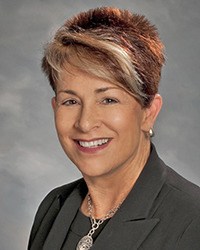They’ve kept an eye on key Auburn intersections rain or shine, ever since June of 2006, clicking photos, making short video clips of red-light runners.
For violators, there were fines, even court appearances.
Later, the City added cameras to patrol speeds in school zones.
Many praised the red light photo enforcement system, many loathed it, deriding it as government overreach.
But the marked drop every year since the cameras went live in the number of infractions issued, that the system was no longer paying for itself, and the message it sent to out-of-town visitors soured City leaders on its Arizona-based vendor, Redflex Traffic Systems, and as it turns out, the system itself.
By a 4-3 vote, the Auburn City Council on Monday said no to contracting with another vendor, GATSO, Inc. of Maine, which would have saved the City $100 a month per camera and offered extra features, including license plate recognition.
By so voting, and with no plans to re-up with Redflex, the vote effectively ends the eight-year-old red-light photo enforcement program. The contract expires at the end of the year.
“It’s done,” Auburn City Attorney Dan Heid said after the meeting.
Before the vote, City leaders talking about the proposed contract strayed into the efficacy of photo-enforcement itself and the City’s practice of placing signs at intersections where there are no cameras.
“The system that we are discussing tonight has significant improvements in cost and flexibility, but do we need it?” Councilmember Largo Wales asked of the proposed contract with GATSO, Inc. “What message does it send to our community when there are warning signs at every major intersection? Looking at traffic outcomes, Auburn has seen a decrease in photo infractions and not a significant change in auto or pedestrian accidents.
“Talking to the Auburn School District Transportation Department,” Wales continued, “their empirical findings support the use of the solar-operated traffic speed indicators with the flashing lights in front of the schools. They report those to be more effective.”
Councilmember John Holman, a former police officer, said statistics just don’t show that the cameras are effective.
“The purpose of photo enforcement is to reduce accidents, and I submit to you that in the eight years we had Redflex, it didn’t do anything for the accident statistics. We had the same number of accidents with and without, within one accident difference, and that’s not a statistically-valid reduction in accidents,” said Holman.
Holman noted that for the City even to take advantage of one of the prospective vendor’s added features, for example license plate recognition to catch criminals, it would have to get past a state law that limits the use of photo-enforcement data to non-criminal activities.
And he recalled one accident the cameras could have done nothing about.
“As to the tragic accident we had at Auburn Way and Main Street, where a drunken driver at high speed killed a much-loved cab driver in the City of Auburn, photo enforcement would not have prevented that. That guy was going to run through that at high-speed anyway,” Holman said, referring to the July 4, 2012 accident that killed cabbie Brian Love.
Councilmember Bill Peloza spoke for photo enforcement.
“I’m for prevention… I support the new company, I support signage that we are taking down. There’s both sides of the story,” Peloza said.
Councilmember Claude DaCorsi recalled conversations he’d had with City residents about the program.
“Some people said, ‘Why wouldn’t I want it? It’s a safety issue.’ Others have said Auburn is the most unfriendly place in the Sound because we have these cameras.”
DaCorsi said that his own research into red-light photo communities across the nation found photo enforcement actually increasing the number of rear-end collisions.
“People know there’s photo enforcement, the light is quickly changing from yellow to red, they slam on the brakes, the driver behind them is not diligent enough, and the next thing you know you have a rear ender. That is not necessarily what we are experiencing in Auburn, but many cities across this nation have looked at the down side of photo enforcement, and others look at the plus side … I feel at this time that the red light camera system is not what we should have,” DaCorsi said.
With input from a committee constituted of Auburn Police and the City’s engineering, legal, finance and information technology departments, the City had recently put out a request for proposals (RFPs) from vendors. Three vendors – Redflex, ATS, and GATSO – bit.
After reviewing the companies, the technology involved, the services offered and each company’s references, the committee chose GATSO. It based its recommendation on the criteria that the RFPs identified, their importance to the City Council and the vision that the people responsible for public safety in Auburn had for an effective system.
The contract proposed, among other things:
• An initial three-year contract
• A $3,900 cost per camera, per location.
The City had paid $180,000 every year to Redflex to keep things going.
The City launched the program on June 30, 2006 at two intersections: Auburn Way South and 4th Street Southeast; and Auburn Way South and M Street Southeast. It added Harvey Road and 8th Street in December of that year. Today the program equips school zone safety cameras for Mt. Baker Middle School and in the school safety zones of Chinook, Dick Scobee, Lea Hill and Arthur Jacobsen elementary schools.



